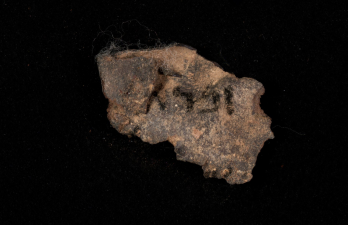 Record rainfalls dumped on the region in this winter’s storms rendered a remarkable makeover of the Judean Desert, turning it from a Middle East dust bowl into rolling English hills. Israeli photographer Nir Cohen captured the transformation in these stunning images; see before and after photos above.
Record rainfalls dumped on the region in this winter’s storms rendered a remarkable makeover of the Judean Desert, turning it from a Middle East dust bowl into rolling English hills. Israeli photographer Nir Cohen captured the transformation in these stunning images; see before and after photos above.
It is raining again in Amman, Jordan today. Our winter snow has melted, and new green growth fringes the open hills outside the city. But the contrast is not as striking as in this blooming desert.
I’ve only seen the Judean hills from an airplane, flying over low when I enter and exit Jordan. From the sky, it’s a barren expanse of yellow and gold sand, dry wadis etched in snakelike patterns between craggy hills. The relatively small desert (about 1,500 km2) is sparsely populated and bordered by the Mountains of Judea to the west and the Dead Sea to the east, where its ancient cliffs tower 300 meters above the shoreline.
Cohen told Jewish News, “The biggest storm of this winter in Israel, brought with it enormous amount of rainfall to all parts of the country including in places we would normally not even dream of having that much rain, such as Be’er Sheva in the Negev.”
Located about 1,200 meters beneath the Jerusalem Mountains, the desert acts as a basin for regional rainfall. This winter’s storms filled the usually dry valleys with strong water flows and flooding. The result is a thick carpet of grass covering the desert’s hills.
Several ancient rivers cross the desert, creating canyons up to 500 meters deep. Some of these rivers flow year round and create oases such as Nahal Arugot, Nahal Prat, and Nahal David. Others lie dormant, only flowing in the aftermath of seasonal storms. The result is a constantly changing landscape.
Chalk hills, cliffs and mountains stand alongside plateaus, riverbeds, and deep canyons. This rugged landscape has provided isolation to monks and hermits throughout history, as well as refuge for rebels and zealots. This is also where the Dead Sea Scrolls were discovered hidden, decades back in a cave in Qumran.
For modern seekers of urban escape, the desert boasts nature reserves (Ein Gedi), historic sites (the Maccabees fortress, Masada), monasteries and spectacular panoramas.
There are so many ways to explore this unique landscape. Travel on foot, by bicycle, or with an SUV. Go with a guide or trek it alone. Lodge in one of the many area hotels or camp out under the stars for a real desert experience. Cohen urges everyone, “Definitely consider paying a visit to the Judean desert, but hurry up before the desert will go back to its regular outfit – dry and yellow!”
Images by Nir Cohen from The Jewish News








Comments are closed.